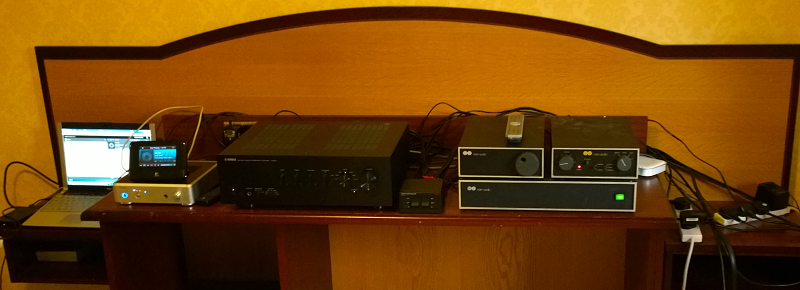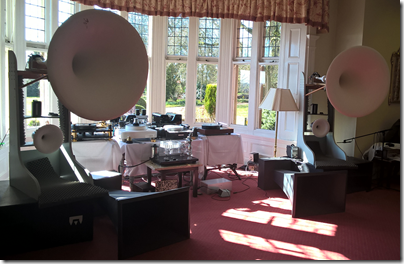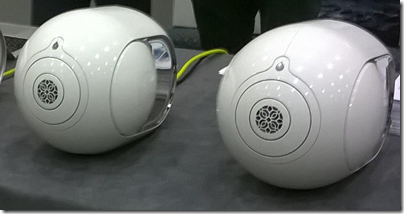I have reviewed numerous wireless earbuds over the last six months, but the real test is which ones I pick out of the pile when going out for a walk or run. Often it is the Shure Aonic 215, despite some limitations. They are an unusual design which hook right over the ear instead of just fitting within; I like this because they are more secure than most designs and I don’t like the inconvenience or potential expense of losing a valuable gadget when out and about. Plus, they sound good.
How good? It was some years back that Shure opened my eyes (or ears) to how good in-ear monitors (IEMs) could sound. It was at a show, only a demo, and the IEMs had a four-figure price, but it made me realise the potential of in-ear electronics to sound better than any headphones I have heard.
I also have some lesser but much-used wired Shure wired IEMs which are a years old but still sound good. I’m happy to say that the Aonic 215s sounds substantially better in every way: clarity, frequency response, realism.
That said, the Aonic 215 true wireless has had a chequered history. Launched in April 2020, they were actually recalled by Shure because of problems with one earphone not playing, or battery issues. Shure fixed the issues to the extent of resuming supply but they are still a little troublesome.
If you value convenience above sound quality, you can get other earbuds that sound fine, have more features, and cost less – so go and do that.
Still reading? Well, if you like the Shure sound the True Wireless does have a lot going for it. It’s important to understand that this is a modular system. The Aonic 215 has Shure’s standard MMCX connector and you can get a cable that would let you use these wired. You can also get other Shure IEMs to connect to the True Wireless earhooks to let you use them wireless.
This package of course has them in one. You get a charging case too, which will charge the IEMs three times when fully charged. Play time is up to 8 hours (7 hours probably more realistic). Long enough for me.
Task number one is selecting the right ear sleeve. The aims is to create a seal in your ear. 6 pairs are supplied, including the one pre-attached. The best in my opinion are the foam type which form themselves to the shape of your ear, and which come in small, medium and large. Changing these is a little awkward and as ever one worries about damaging the unit but with a little twisting and tugging it is not too bad. Most other earbuds do not have these foam-type sleeves.
That done, you fit the earbuds and turn on. Now the fun starts. There is a single button on each ear hook, positioned on a circular piece which hangs behind your ear. You operate it either by squeezing this piece, or pressing the button which then presses into your head. I found the squeezing option better, but it is not super convenient.
Don’t worry too much though as functionality is limited. You can power on and off, pause, answer or end a call, and turn environment mode on or off. A triple click activates a voice assistant (I didn’t try this).
Environment mode? This is pretty useful, and lets you hear what is going on around you. If you want to have a conversation while listening, it is pretty much essential.
What’s missing though? Well, volume control and track skip are the key ones. You will have to use your player for that. Shure is still working on the firmware so this might improve, but one button is not much to play with.
Another potentially big deal is that calls only work in the right ear. This doesn’t bother me much, but for some it is a deal-breaker, depending on how you want to use them. I expect to use them almost entirely for music.
There is a Shure Play app for iOS and Android which describes itself as a high-res audio player. This has a graphic equalizer but it only works when playing music through the app, which excludes streaming sources. You can also adjust the environment mode. You need the app to update the firmware – which given the history of the product is quite important; the update history makes reference to “bug fixes.” The update is done over Bluetooth and takes around 30 minutes; my first effort failed because the mobile went to sleep. I got this done in the end by keeping the app open and touching it from time to time to stop it sleeping. Such are the things that lovers of high quality audio endure in pursuit of the best sound!
I use these earbuds mainly with a Sony Walkman music player and like the excellent sound quality, secure fit, and very useful environment mode. A few things to note about the sound, which is the main benefit here. You get aptX, AAC and SBC, with aptX best for quality but AAC important for Apple devices. There is only a single driver which limits the quality compared to the high-end Shure devices, like the ones I heard years ago, but it is still excellent. I would characterise it as neutral in tone, with particularly good separation and bass that is clean and not at all boomy. The lack of boom may come over as bass-light at first, but persevere and you appreciate this. It is important to have a good fit and if you don’t get the seal they will sound thin; of course every ear is different so how easy this is will vary. The design of the Shure also means that the sleeves can clog with wax and a little tool is supplied to help with cleaning.
Not for everyone then; but these suit me well. One last thing to mention: Shure unfortunately has a reputation as not the most reliable of earbud brands. In my case, one wireless unit went dead after a couple of weeks. Shure replaced it and all is well, but it is somewhat concerning.







































